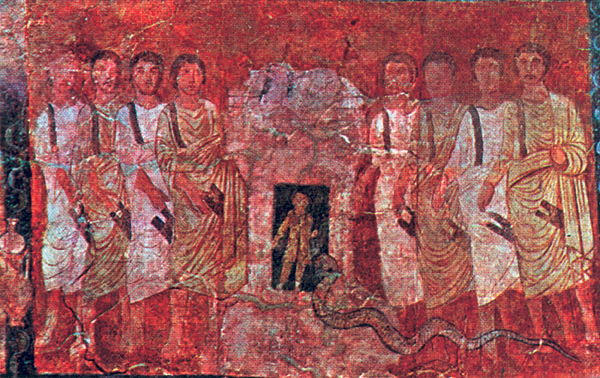Image Details

Edwin Goodenough, Symbolism in the Dura Synagogue, 1964/Princeton University Press
“O, Baal, answer us,” shout the prophets of Baal in their contest with the Israelite prophet Elijah to determine whose deity is truly God (1 Kings 18:26). Only the true God, they have determined, will answer a prayer to set fire to a sacrificial bullock lying on an altar, at center. The Baal-worshipers cry out in vain—their bullock remains intact, as depicted in this synagogue painting. But when Elijah prays, his bullock is immediately consumed by fire (1 Kings 18:38).
Although the Bible states that “Baal’s prophets number 450” (1 Kings 18:22), the Dura artist reduces their ranks to eight: This painting may represent the synagogue’s counterattack on the church’s painted propaganda presenting the eighth day as the proper day of worship.
The small man standing inside the altar does not appear in the biblical story, but rather in a later midrash, or rabbinic elaboration on the story. According to this midrash, when the prophets of Baal realized they would fail, a man named Hiel agreed to hide within the altar to ignite the heifer from below. The Israelite God foiled their plan by sending a snake to bite Hiel, who died.
